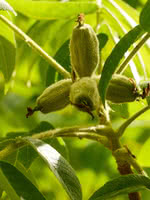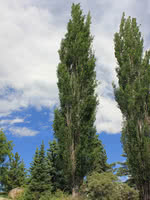Mon-Fri 9am - 5pm Mountain time
Swedish Aspen vs Butternut (White Walnut)
Juglans cinerea
Populus tremula Erecta
COMING SOON
(new stock expected: fall of 2025)
Butternut is one of the few walnut varieties native to Canada. The nuts are sought after for their mild, sweet, and oily taste. Ensure this tree is planted in full sun and well-drained soil for best results.
Butternut is self-fertile but it has better yields when planted near other butternuts. It can survive in zone 2, but reliably produces nuts in zone 3.
A top CO2 absorbing species. Experts think this tree may help climate change more than others.
Swedish Aspen is an extremely fast growing columnar aspen tree. It's ideally suited for urban settings where space is limited such as privacy screens or along the edges of driveways. Swedish aspen produces no fluff and is less prone to suckering than tower poplar. Swedish aspen thrives in a variety of growing conditions with little maintenance or pruning.
We grow this species over a two year production method from root cuttings via the Smoky Lake Styro-Stack method (SSS method) first pioneered at Smoky Lake Forest Nursery in 2002. This method has quickly become the gold standard in the reforestation nursery industry for growing clonal aspen.
We are well known for pioneering its use worldwide and currently produce some of the highest volumes of Swedish Aspen in Canada.

